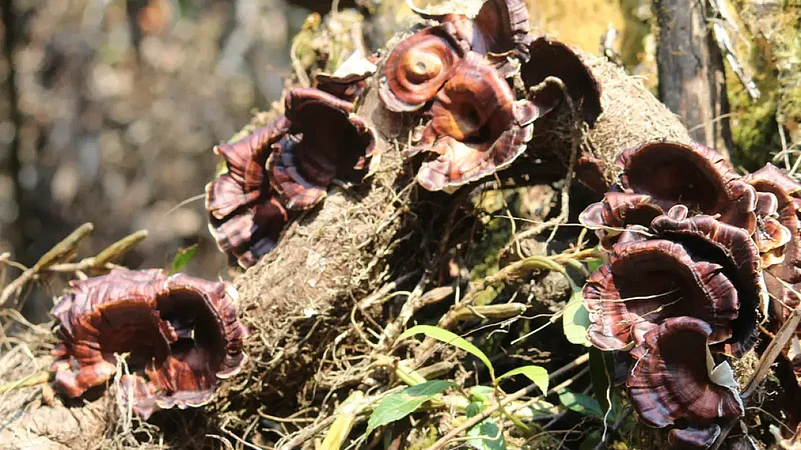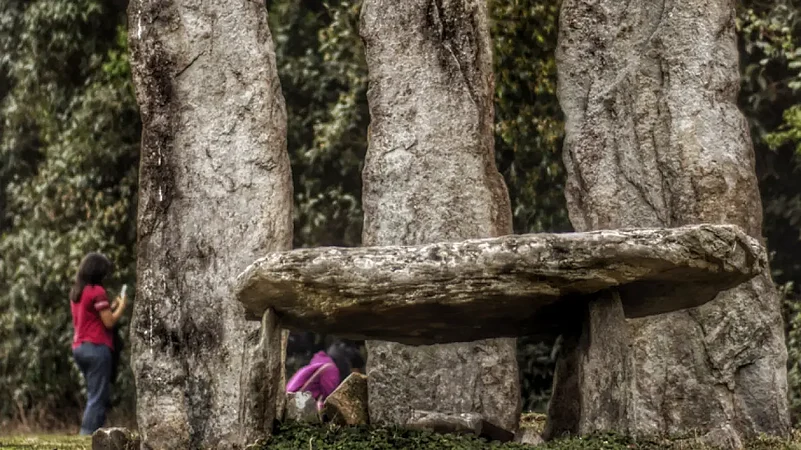Known as ‘Nature’s Own Museum’, this forest is one of the oldest and most famous sacred groves of Meghalaya, harbouring a diversity of flowering and medicinal plants, trees, mushrooms, birds and insects. The forest is located in the village of Mawphlang – meaning ‘moss-covered stone’ in Khasi – which is amongst the numerous settlements named after monoliths. Spanning a land area of 193 acres, the forest is protected by members of the Lyngdoh clan. It is believed to be the abode of the Khasi deity, Labasa, who is said to protect the clan and the village from all harm. As goes the local saying: “There cannot be a kingdom without a sacred forest, and no sacred forest without a kingdom.”

Sacred Spaces
On arrival, visitors are left awestruck by the scenic beauty of the area: beautiful green meadows stretching out far and wide, with the woods tucked away in a corner. The forest itself is divided into three sections, of which only the first and the second section can be visited. Guides are compulsory; however, you can sign up for a 20- to 30-minute half trek or a 40- to 60-minute full trek.

Things to See and Do
At the entrance to the Mawphlang Sacred Forest is the first group of monoliths: three standing stones and one seated stone. This is where village elders seek permission from the deity to carry out the sacrificial ritual inside the forest. It was believed that if a leopard appeared, it was an auspicious sign and the ritual could be conducted as planned. However, if a snake appeared, it was considered inauspicious and the ritual would be abandoned. The entrance to the forest resembles a ‘green tunnel’, all naturally formed by the branches of the trees. Inside the forest, the only audible sounds are the melodious calls of songbirds, the hum of crickets, the buzz of bees and dragonflies and occasionally the gurgling of forest streams.

The forest floor is carpeted with humus, which has accumulated here for centuries, so be cautious of your step, especially where the trail grows narrow. As you continue the trek, you will see a stone shaped like a long table – this is where the preparations for the ritual were conducted. A short distance from here is a cluster of smaller moss-covered stones, which served as a waiting area for young adults as the ritual was conducted. Besides the tales associated with the grove, there is an abundance of flora and fauna to be explored.
The latter half of the trek involves negotiating a somewhat rugged terrain, climbing up and down rocky sections and crossing gushing streams and cascades. The moss-slickened stones around these areas can be quite slippery, so exercising due caution cannot be emphasized enough. Round off the trek with a cup of hot chai at the tea shack on the road across the pretty meadow.
















